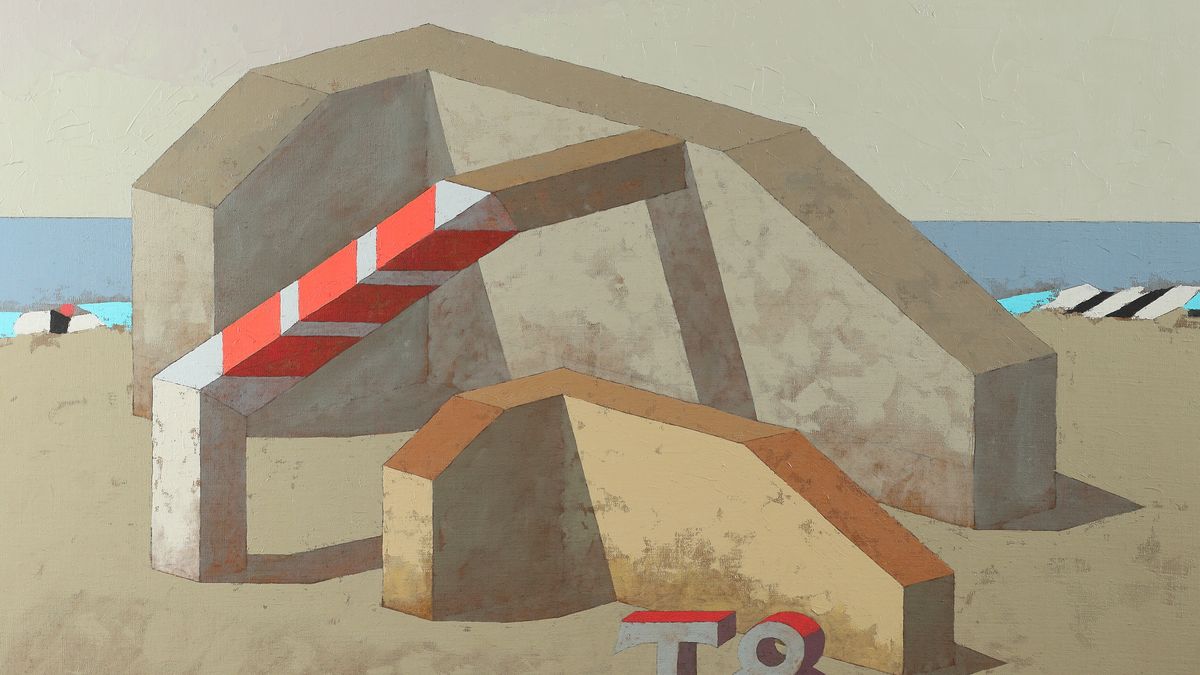The artist Fernando Maza He was born in Buenos Aires in 1936, and although he settled abroad at the age of 22, he never left Argentina. The sample “The construction of painting” inaugurated at the National Museum of Fine Arts, it spans his life until the year of his death, 2017, in Nogent sur Marne, France.
Curated by Pablo De Montethe exhibition places the viewer in front of more than 50 oil paintings and watercolors and, from beginning to end, one perceives the encounter with a great of our art. Production began at the end of the 1950s with informalist expressions, whose aesthetics Mace He never strictly adhered to it, like the rest of the influences, such as metaphysical painting and, in a more diffuse way, surrealism and pop, relegated to the imperative of preserving his own personal and unmistakable style.
The director of the Museum of Fine Arts, Andres Dupratpoints out: “Maza’s career was forged by traveling through different geographies. His stays in Buenos Aires, New York, London and Paris allowed him to discover different artistic scenes. In his works, symbols are displayed as mysterious characters. Enigmatic and disturbing, his images make unstable the meanings, the codes of perception and the spatial coordinates with which we apprehend the reality”,
The strange landscapes of Maceare populated by architectural forms that impose their powerful presence as imaginary monuments, always freed from fulfilling any utilitarian function. His compositions are usually framed with arches of porticoed architecture and exert the attraction of ruins.
When he exhibited in Bonino in 1964, Jorge Romero Brest presents it, raises the qualities of its typographies and signs, dispensed with their reason for being and, this is how he describes it: “Fernando Maza, a young man with a mature air, a reflective gesture and slow speaking, who paints fictitious objectivities (architecture and impossible mathematical demonstrations, letters that do not form syllables, numbers that do not indicate quantity, arrows that do not point towards anything, inks without descriptive references) The game attracts.”
Although the artist refused to theorize about his work, the MNBA has in its own collection a painting made in 1974 that offers a clue about the meaning of the elements he used in his compositions. To begin with, it is titled, it is called “EC2.”, a name that, according to the text of Roberto Amigorefers to an equation. Then, in the painting there is a letter Y next to an X, which could well be the unknowns to be revealed.
The (&) ampersand sign, used as (y) “and” in English, is reiterated as if there were several missing questions to add. After living in New York for 13 years, Mace He painted this painting in London, and it is assumed that, given the language, the ampersand sign was in common use for the artist. However, in this case, his desire to preserve his work from interpretative efforts is fulfilled. Today, the MNBA reports that the name “EC2.” coincides with the zip code.
The works exhibited by the MNBA do not have titles. It is clarified that he stopped using them in the 70s, an absence that undoubtedly favors interpretive ambiguity. The objects, letters, numbers and signs have a meaning that the artist refuses to reveal. His well-known words: “and I still haven’t figured out why the letter A is matriarchal, why “Aleph” is kept so young or why I am sometimes the number 7”, seem designed to discourage critical analysis.
However, some perceive the most diverse messages in his works, even the theorist K. Rosselot Laspiurin his text “The metaphysical typography of Fernando Maza”, observes: “Intuitively we relate M. to the school of the ancient Pythagoreans.” Next, he transcribes a text by Julián Marías about said school and observes that it could well be confused with a description of Fernando Maza’s images.
Halfway through the tour, the predominance of architecture bathed in the soft light of the Mediterranean sun stands out in the exhibition. They are the works that he painted during the summers at his house in Cala Deià, on the island of Mallorca. On these uninhabited beaches there are stairs that lead nowhere and wide walls in the middle of the landscape.
Right there, the mastery of the technique is accentuated, the character of the brush strokes, the games of transparencies, the very elaborate colors and the magical isolation that recalls metaphysical painting. The signs and typographies tend to disappear and among the objects there are some cubes and geometric shapes in the middle of those scenic spaces that make up the beaches.
His silent work obtained the greatest recognition. In New York, Maza won a scholarship from the Pan American Union to study graphic arts at the Pratt Graphic Art Center. In 1971 he received the Guggenheim fellowship. He won numerous awards, including the São Paulo Biennial of 1965, the Cali Art Festival of 1968, the First Prize of the National Painting Salon of 1984, the Palanza Prize of 1985, the Grand Prize of Honor of 1987 and the Fortabat Foundation Prize of 1994.
Source: Ambito
I am an author and journalist who has worked in the entertainment industry for over a decade. I currently work as a news editor at a major news website, and my focus is on covering the latest trends in entertainment. I also write occasional pieces for other outlets, and have authored two books about the entertainment industry.




